Visiting Montmartre and Sacré-Coeur Basilica in 2025
Sacré-Coeur Basilica in Montmartre.
Visiting Montmartre you’ll find a unique village with its own personality within Paris. The Basilica of Sacré Coeur and the wonderful views are the highlights of a visit to the neighborhood.
Sacré Coeur is the second most popular tourist destination in Paris after the Eiffel Tower. And though some locals will say it’s not the area it used to be, it is absolutely worthy of a visit.
History of Montmartre
Montmartre has long been a place where “anyone and everyone” was welcome, the very heart of the Bohemian movement. And at one time, it actually was its own village!
In 1871, locals of Montmartre turned against the government and created their own system that they called “La Commune”. Though it only lasted three months, the legacy is so strong that even today, people born and bred here call themselves “Montmartrois”, or “bobos”, for bourgeois bohemians
Though it is a bit more gentrified today, in the late 19th century and well into the 20th, it was what Greenwich Village was to NYC in the 1970s.
French artist Henri de Toulouse-Lautrec lived and worked in Montmartre, as did Renoir, Modigliani, Apollinaire and Picasso. Many artists often frequented one of the oldest cabarets in Paris, Au Lapin Agile, which still operates as an informal cabaret venue today. Later in the 20th century, the cabaret scene attracted famous American actors, such as Charlie Chaplin and Vivien Leigh.
The most famous of French cabarets, the Moulin Rouge, is located on Boulevard de Clichy, and was the inspiration for Toulouse-Lautrec's legendary poster featuring the dancer “La Goulue”, as well as the 2001 movie “Moulin Rouge!” and the Broadway show by the same name.
It’s still a charming neighborhood - just perhaps a bit more jaded and expensive than in the days of its bohemian roots, and with some additions of tourist-centric eateries and shops. As with most areas that attract tourists, if you move a little further out from the main point of interest itself, you will find a more authentic eating or shopping experience. So don’t hit the first crepe shop you see coming down the hill.
The jewel in the crown of Montmartre is of course the Basilica of Sacré Coeur. Built only a century ago, it’s rather just a babe in the scope of French churches! The stark white domes of the Basilica are powerful and imposing at the top of the hill. You can see the church from everywhere in the area and heading there with your eye on those domes feels like a pilgrimage of sorts.
You do have to set your cap a little for the tourist invasion element once you arrive, but don’t let that discourage you. Stay away from the caricaturist scams and instead just take in the view, see the beautiful basilica, and just enjoy the journey up the hill, which is part of the experience and what makes it memorable.
Getting to Montmartre
Montmartre is located in the 18th arrondissement of Paris and is a well-served area via Metro. Trainline recommends using Lines 2 or 12.
The nearest metro station to Montmartre is Anvers on Line 2 or Pigalle on Lines 2 and 12.
You can also choose to disembark at Blanche (Moulin Rouge), Abbesses or Lamarck-Caulaincourt, depending on what else you want to do in the area.
I personally find the Parisian metro not the easiest to navigate, but purchasing a Navigo card is definitely a good idea if you are spending some time in the city. Much better than fussing with the paper ticket machines.
Complete info about traveling in Paris via Metro or RER can be found at Public transport in Paris • Paris je t'aime - Tourist office.
Once you get to the neighborhood, you will need to trek up the hill known as Montmartre itself. There are two ways to do this.
You can ride the Funicular (or as my hubs calls these things “the funky railroad”) up the hill for the price of a single metro ride. It’s about a two-minute ride. The Montmartre funicular is located at the bottom of the hill, directly beneath Sacré-Cœur, at Gare Basse Funiculaire. It’s a good choice if you don’t like climbing steps or have young children or older folks with you.
At the time we visited, Paris was in the middle of a rail strike so the Funicular was not running. No matter. Unless you are unable to do steep climbs, it is much more fun to take the steps!!
It is 270 stairs to the summit of Montmartre. I really enjoyed this colorful trek. I needed a few stops along the way, but that allows for frequent looks back at the city. It’s a very unique experience and feels quite “neighborhoody”.
Highlights of the Basilica of Sacre-Coeur
Sacré-Cœur Basilica is located at the summit of the butte of Montmartre. It is a Roman Catholic Church and minor basilica, and also a national historic monument. Entry to the basilica is free, but as it is an active place of worship, a respectful atmosphere must be maintained. There are no guided tours, but a free audio guide can be downloaded to your own device and listened to with headphones. Access to the Dome can vary, and a fee is charged for that.
The site was selected for its prominent height and visibility from many parts of the city.
The idea of a new Parisian church dedicated to the Sacred Heart of Jesus resulted from the French embarrassment by a brief but successful occupation by the Germans in 1870. (No, not the Hitler occupation - this was an earlier one by Bismark's Prussian army.)
The defeat, along with the capture of Emperor Napoleon III, was considered to be a divine punishment for the moral decline of the country since the French Revolution. So the prominent church was built to remind Parisians to get back in line.
The Basilica is designed in a Roman-Byzantine style and took over 40 years to build - which is longer than it took to build the Parthenon, which only took about ten.
During WWII, the church was struck by thirteen bombs in 1944, but resulted in no casualties. This gave Sacre Coeur a legendary status among the people of Paris. However, the original stained glass windows didn’t survive the bombings, so the beautiful windows you can see today were restored after the war.
On the facade of the basilica, look for the two prominent equestrian statues of Joan of Arc and King Louis on horseback.
The main attraction of the interior of the Sacre Coeur is the huge mosaic of Jesus Christ above the altar. It is among the largest mosaics in the world and was completed in 1922.
The bell of Sacre's Coeur is one of the heaviest in the world, at 19 tons. It was built in Annecy in the French Alps in 1895.
As an active church, Masses are still held every day at Sacre Coeur.
The fantastic hilltop view of Paris.
Great views of Paris from Montmartre
Of course, one of the main reasons people like to go up to Montmartre is for the grand views of the City of Lights. The only place in Paris where you can see from a higher elevation is the Eiffel Tower. (Although I have to admit, I think I prefer the experience of going to the top of the Arc de Triomphe to that of the Eiffel Tower, but perhaps that’s best left for another post!)
Even arriving there on a cloudy, drizzly day in January, it was quite magical to look out over the romantic city of Paris from this vantage point. From its position two hundred meters above the Seine, the basilica overlooks the entire city of Paris and its suburbs. For about 5 euros you can climb the 80-meter dome of the Basilica for an even higher view. But that really isn’t necessary to appreciate it.
Because it is such a spectacular view, many people pack their wine & cheese and head up to Montmartre for sunset. If you choose to do this, just realize you won’t be alone. For a less “touristy” experience, we recommend going early in the day on a weekday.
Sunset Tip - For a less crowded sunset experience, the view from the terrace at Galeries Lafayette is awesome and not likely to be as crowded. Of course it isn’t as elevated a vista as that of Montmartre, but it is still pretty great. You get an excellent view of the Eiffel Tower and many beautiful Parisian rooftops from there, including - you guessed it - Montmartre!
View of the Eiffel Tower from the terrace at Galeries Lafayette .
What else is there to see around Montmartre?
For a great outing, explore the Montmartre neighborhood before or after visiting the Basilica and seeing Paris from above. We really just wandered, but if you prefer having a “hit list”, here are some ideas for things to see in the Montmartre district:
Place du Tertre
The plaza right in front of the Sacré-Coeur that used to serve as Montmontre’s town hall. Today it’s a rather touristy spot with many restaurants and portraitists setting up their easels. Worth a look at least; perhaps not the best place to eat though, as it attracts tourists and is more likely to be too expensive for what you are getting.
The Dali Museum
Featuring the artwork of Salvador Dali is located just 100 feet from Place du Tertre, on Rue Poulbot.
The Moulin Rouge
The Moulin Rouge on Boulevard de Clichy, is the most famous cabaret in the world. It is an interesting building just to do a walk-by, with its trademark giant red windmill sitting on the roof. It is best known as the birthplace of the modern form of the can-can dance and it is still an active venue that you can book tickets for. Oooh-la-la!
The intersection of Rue des Saules and Rue Norvins
The intersection doesn’t have a special name but this small plaza is one of the prettiest in Paris. At the Galerie Butte Montmartre, there are vintage Montmartre posters for sale and the restaurant, La Bonne Franquette, has a lovely facade. It does get busy with visitors but worth a walk by.
Further down Rue des Saules, is La Maison Rose, a pretty pastel pink restaurant that is more than 100 years old and is said to have been frequented by Pablo Picasso, whose former lover supposedly opened the place. It does get busy, so maybe just good for a photo. It is closed on Monday and Tuesday.
The Museo de Montmartre
Musée de Montmartre is located in one of the oldest buildings on the Butte; home of important collections of this area and its famous Renoir Gardens, offering a haven of peace and greenery in the heart of Paris.
The Au Lapin Agile Cabaret
The Lapin Agile is historical and still in operation. This tiny club has over the years attracted many famous artists, musicians, and writers and today it still attracts celebrities. Lively performances of music and poetry occur each night starting at 9pm, but it’s only in French, so may not be for everyone. But if you are just sightseeing, it’s a modest, funky old building worth a look.
The Montmartre Cemetery
This is the final resting place of many great figures of French history, including artist Edgar Degas, and 20th-century filmmaker Francois Truffaut.
The Le Moulin de la Galette
This is now a restaurant but it was formerly a functioning windmill featured in a painting by Renoir. (What is it with windmills around here?)
The Paris Duck Store
ok, this may be a little silly and gauchely modern and maybe even cheesy, but I was delighted to find the Paris Duck Store, on Rue Yvonne le Tac, just a 6 or 7 minute walk from Sacre Coeur. It’s full of spunky, funky rubber ducks, customized in every way! They even feature a “Duck of the Moment” and tailor-made ducks. C’mon! As our son’s college mascot is a duck, I couldn’t resist getting him a little souvenir for his dorm room. After all, Paris is all about what brings one joy, is it not?
Safety check - Just a note of caution in your travels, be aware that not all is sweet and charming in this area. Although the Sacre Coeur immediate vicinity is gentrified and welcoming to tourists, there are some rougher neighborhoods not far from Montmartre. Best advice is to do your exploring during the daytime hours, don’t wander alone at night, and don’t signal yourself as a tourist. And a lot of the more authentic “sights” are not meant for children’s eyes - anything beyond the Place du Tertre and the basilica is best enjoyed by adults. Even “up on the butte”, practice common sense. Pickpockets love to hang out where tourists are, so keep your valuables close and out of sight. A lot of the caricature artists are scammers, so resist the urge to partake, no matter how “artsy” you may be inspired to feel.
The view of Paris from Montmartre is great, even on a cloudy day.
Is Montmartre worth it?
Bottom line? Yes. Go to Montmartre, as it is one of the more unique districts in Paris. You’ll have to deal with some tourists of course, but hey, you are one too!
Absolutely go and see Sacre-Coeur, even if you choose not to go inside. Take in the breathtaking views of lovely old Paris. Take some photos. Maybe get a duck! ;)
Need more ideas for things to do in Paris? Check out our other blog post on Visiting the Latin Quarter and Saint-Germain in Paris.
This post was researched and written by Debbie of the Empty Nest Explorers. You can learn more about the Empty Nest Explorers here.


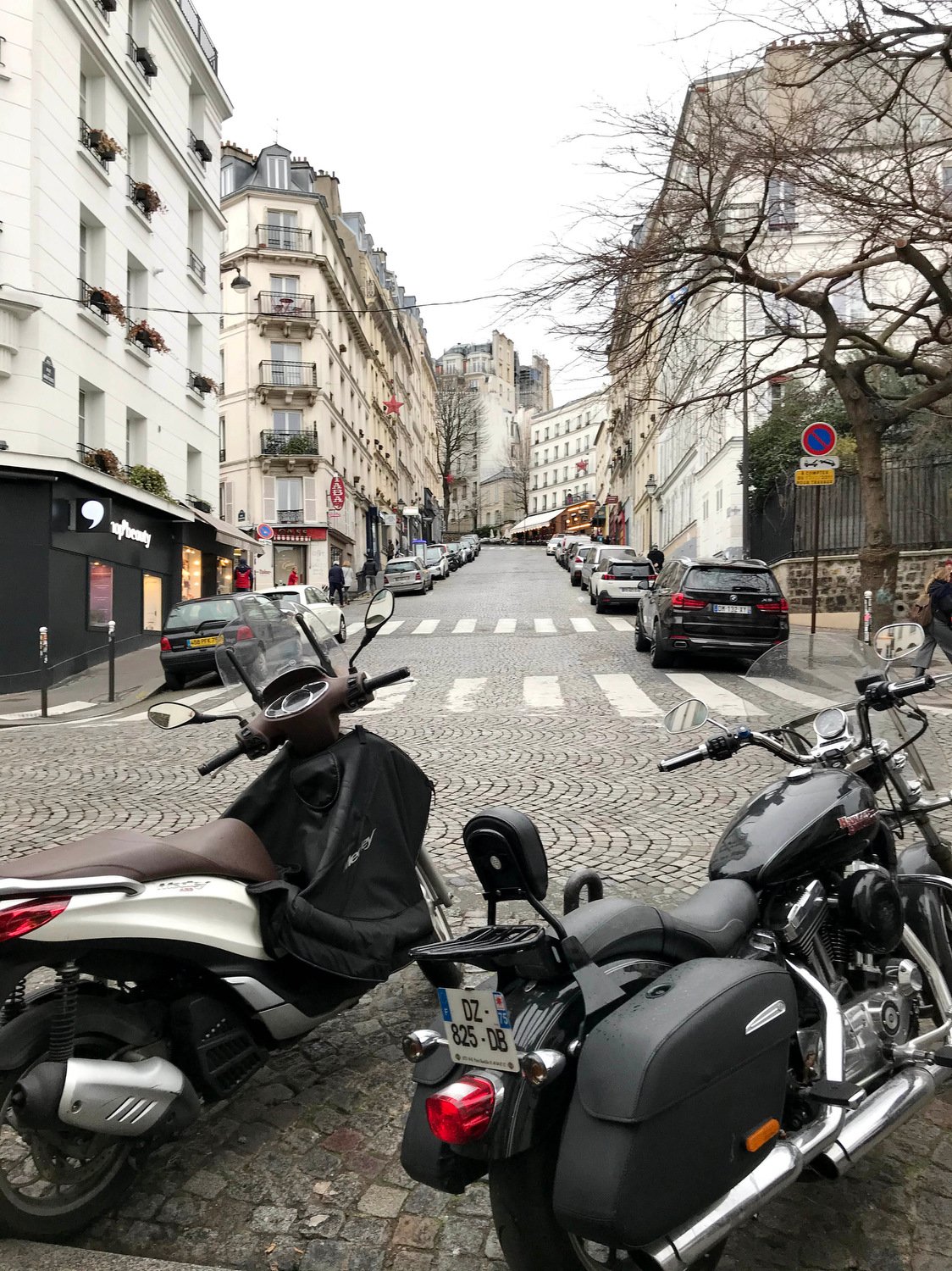
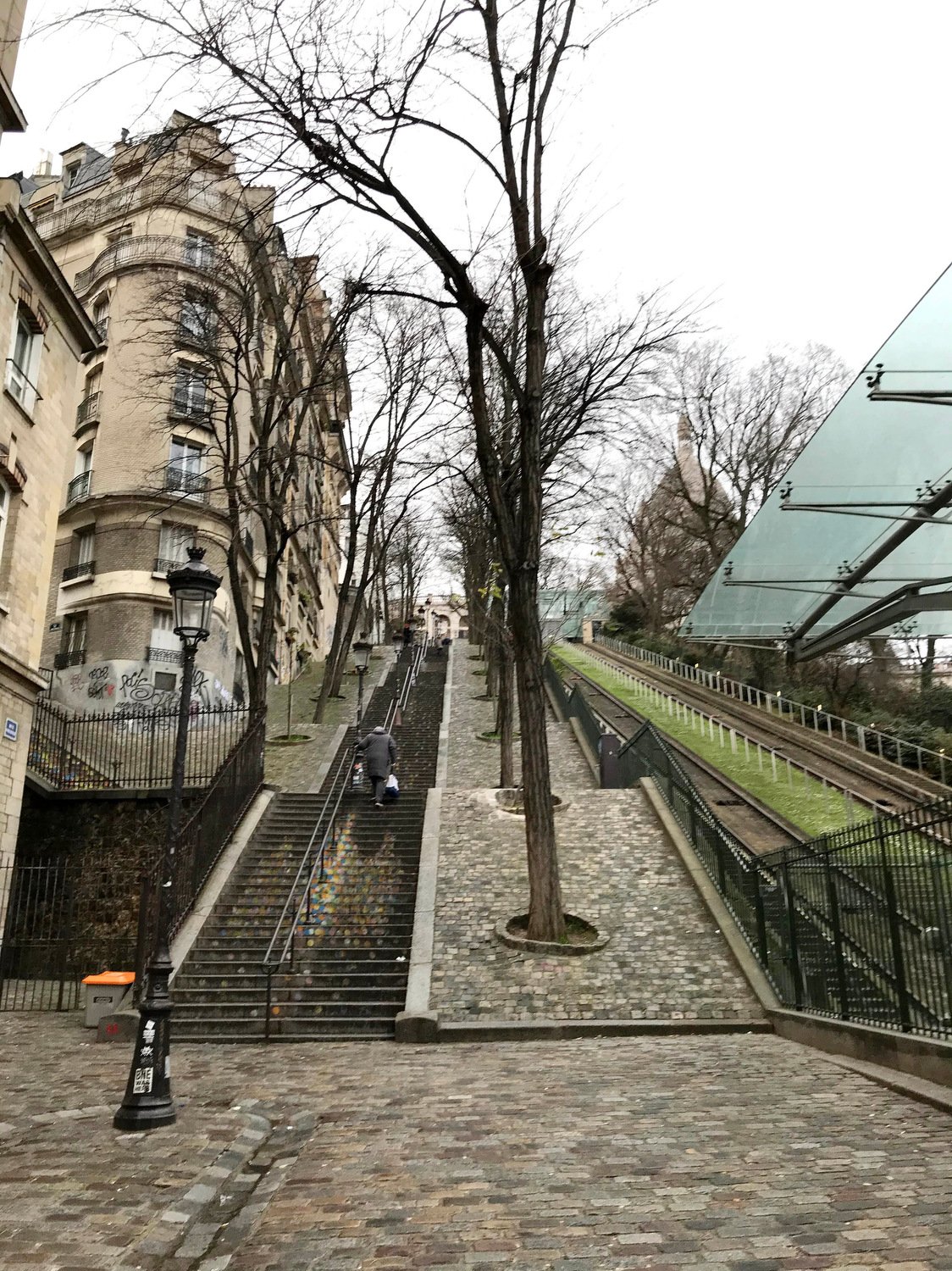
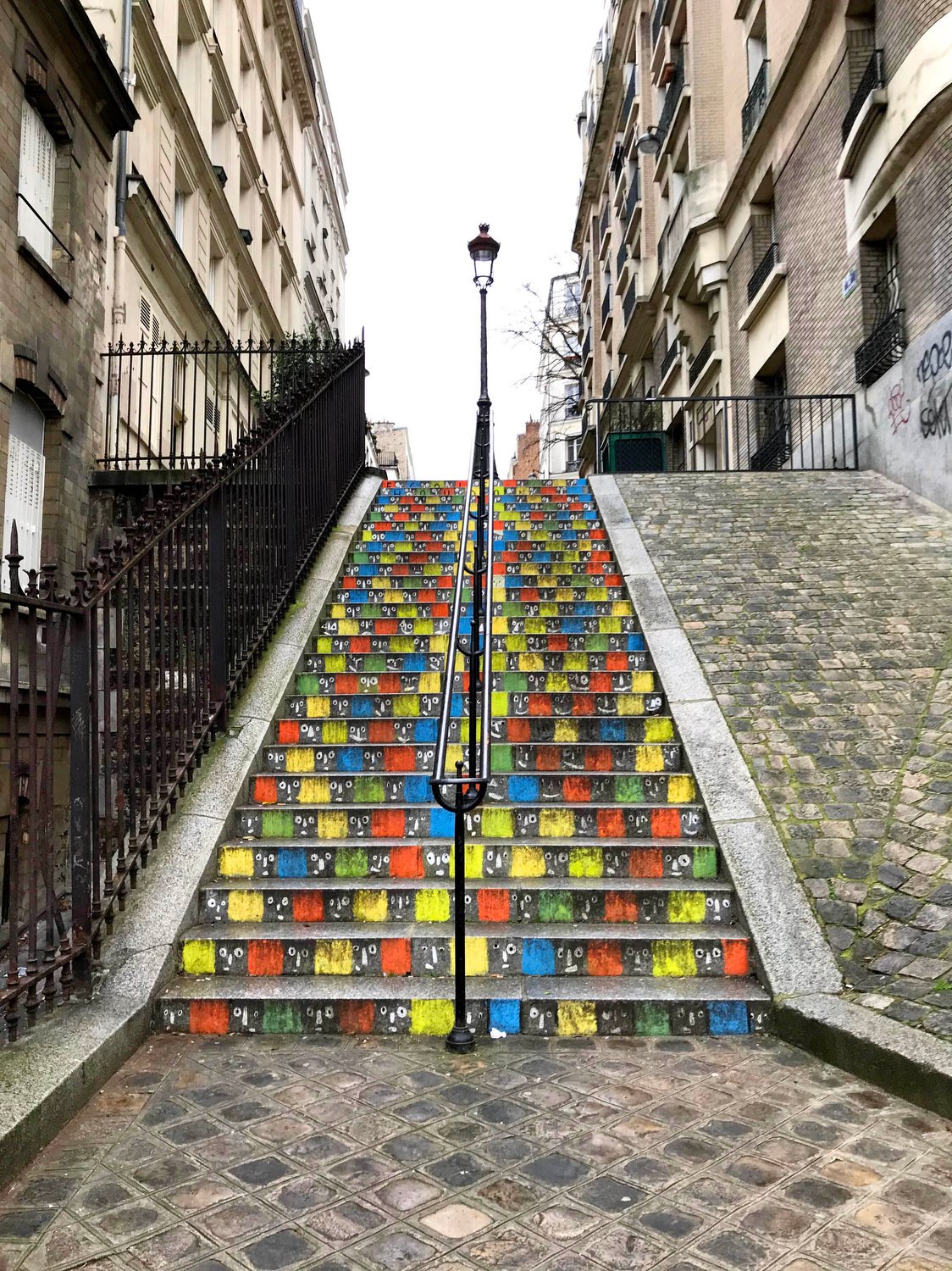
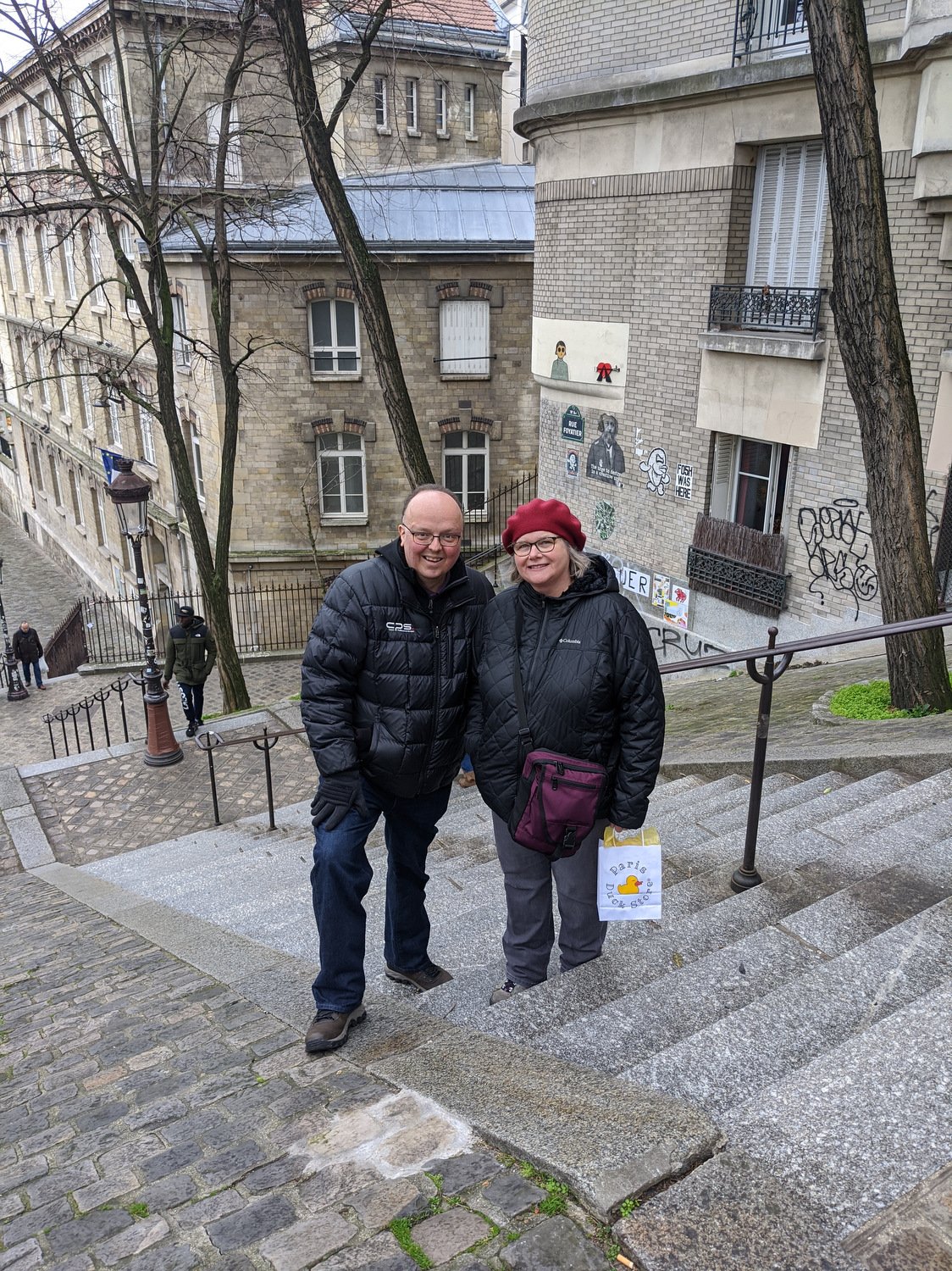
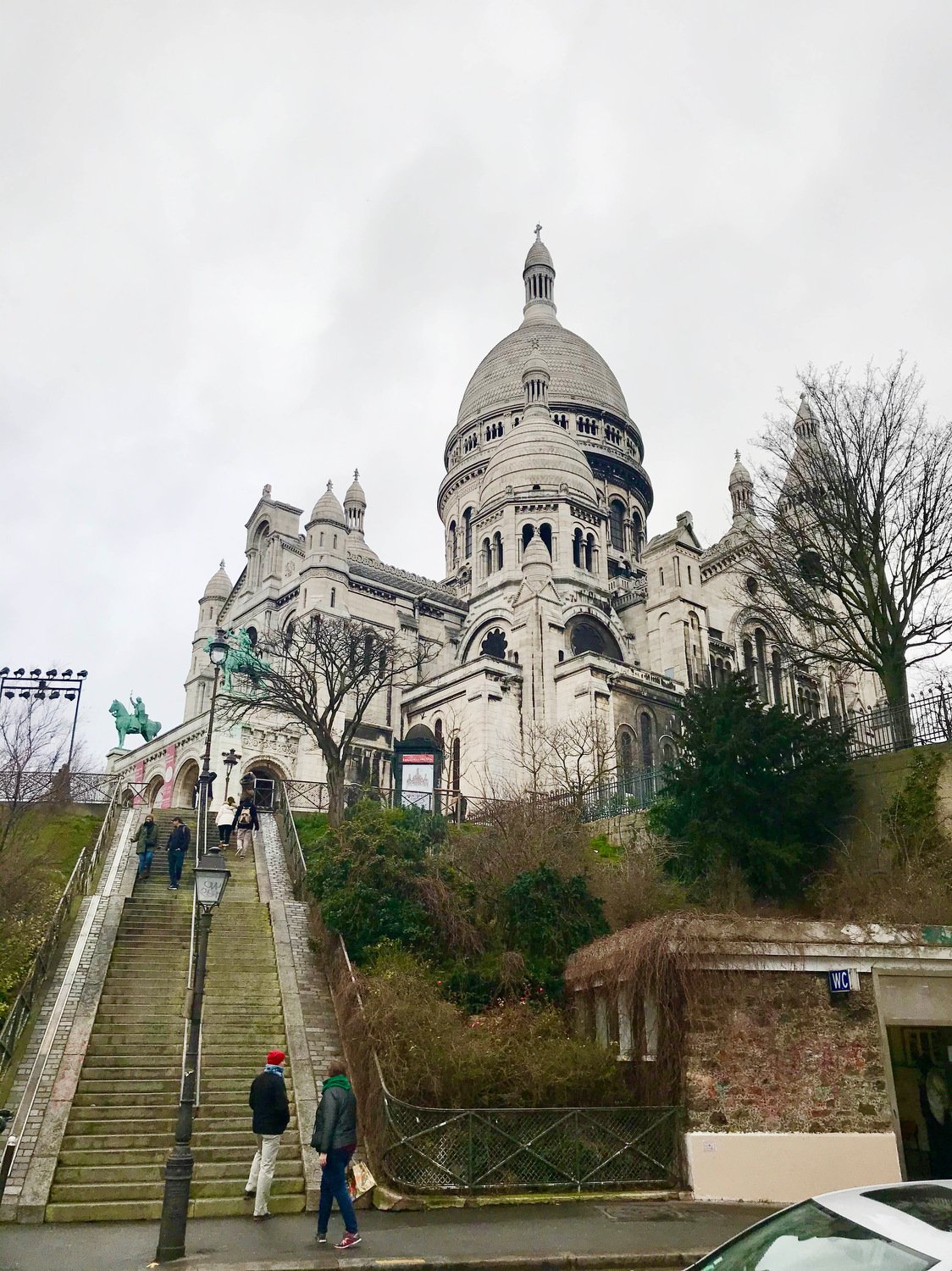
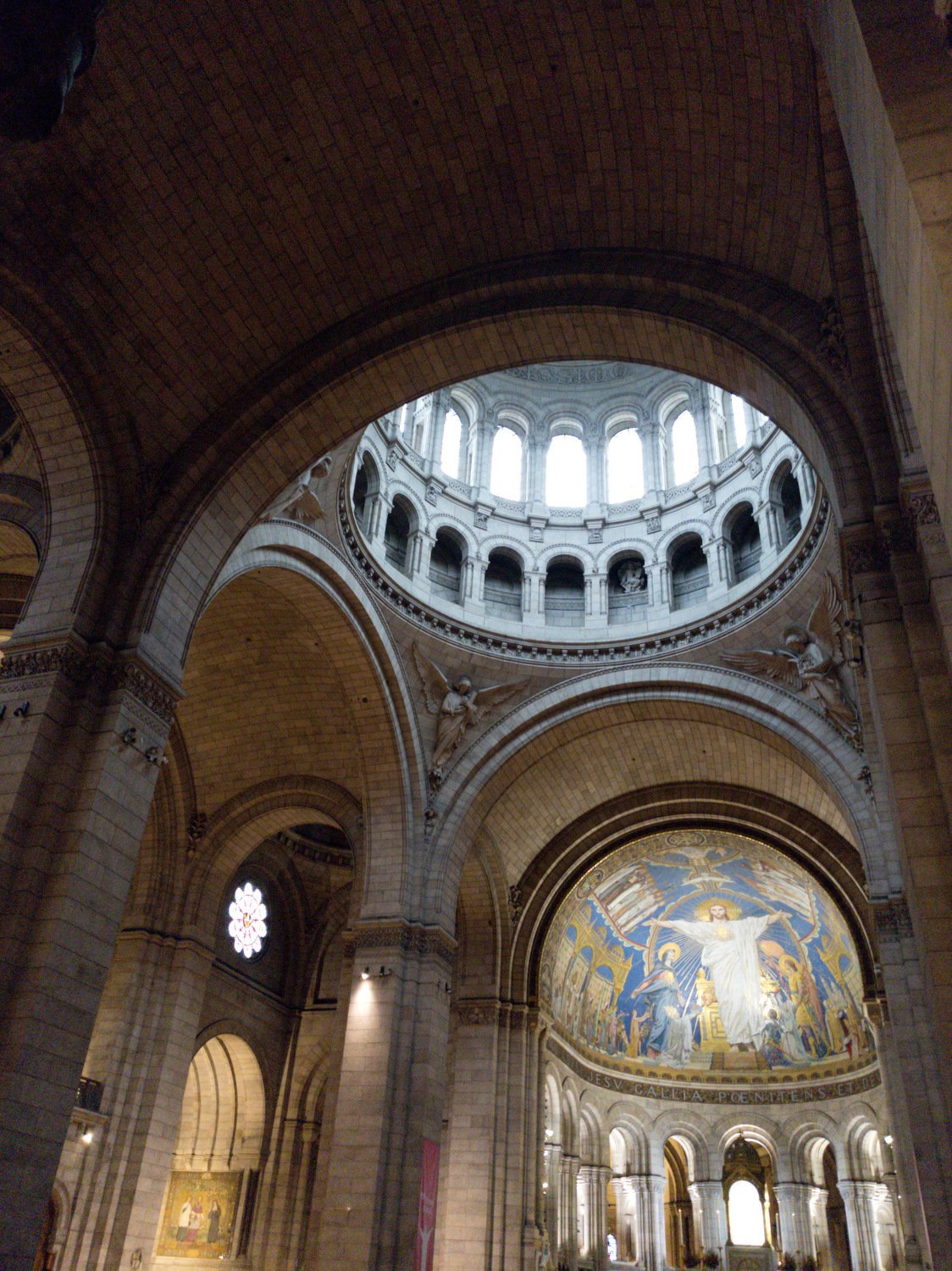
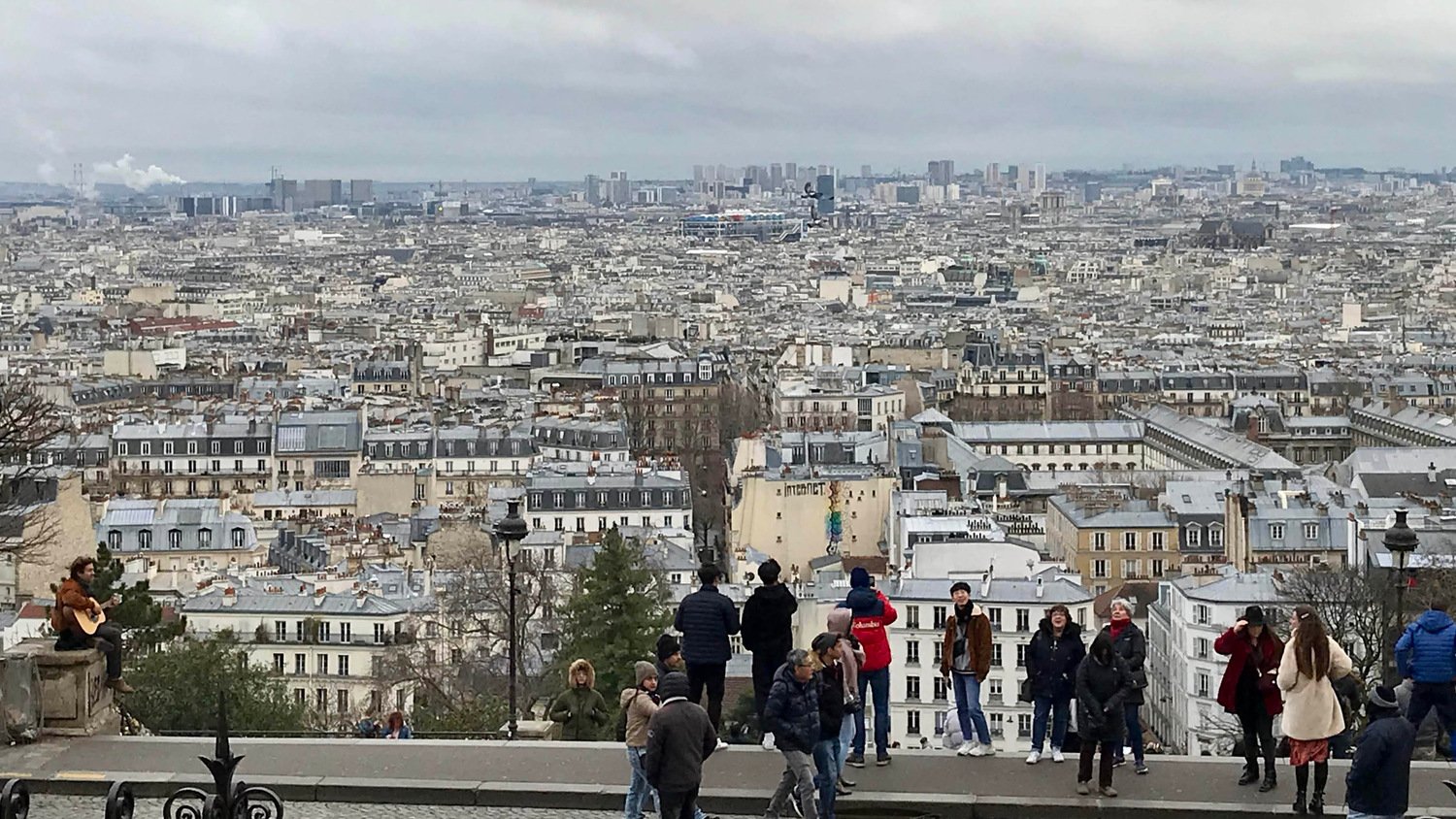











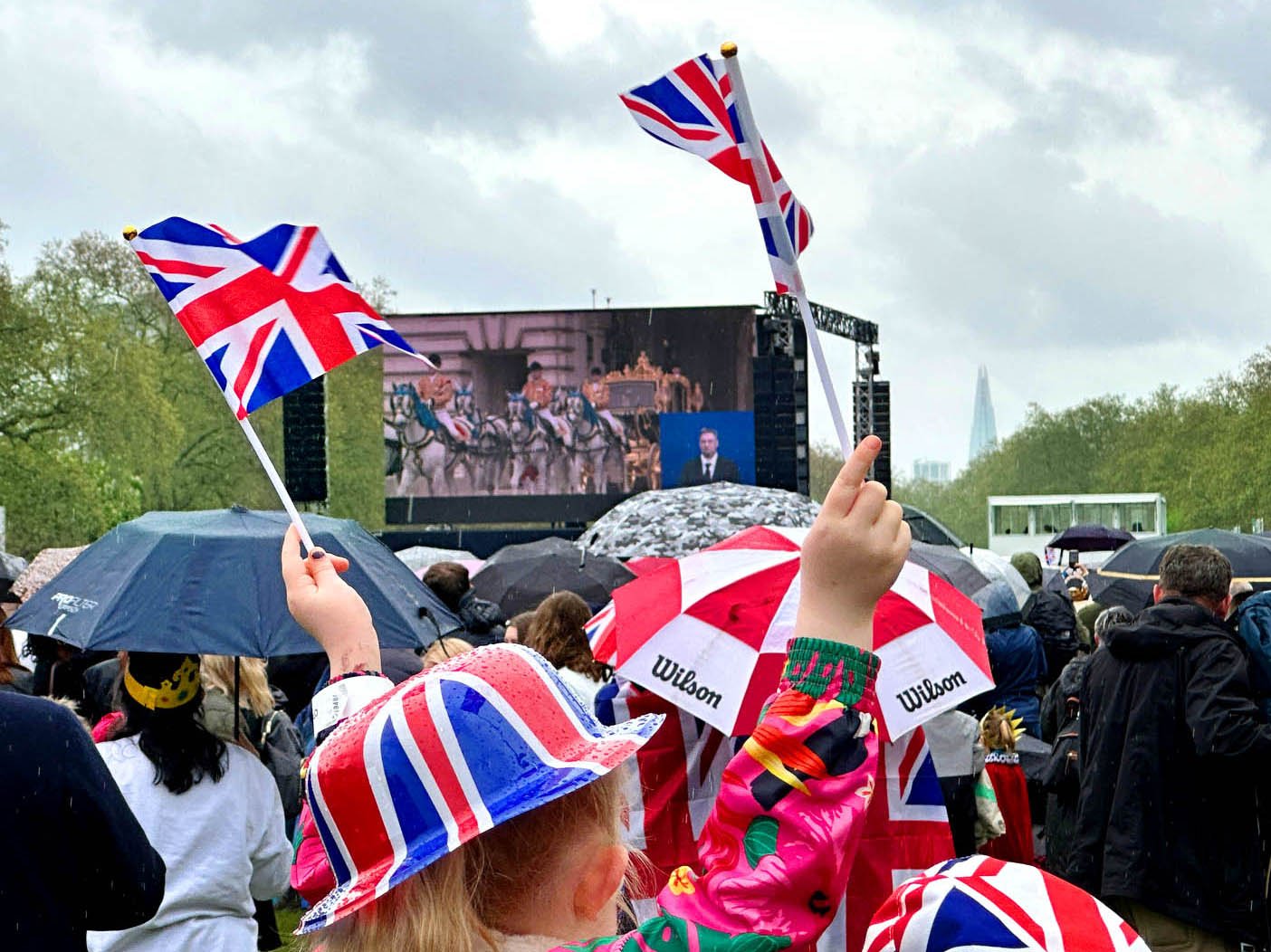
The small village of Óbidos is a popular stop for visitors to Portugal, due to its authentic medieval charm and easy access from Lisbon. It’s good for a solid couple hours visit, especially if combined with other stops in the area.
What we enjoyed most in Óbidos was walking along the fortified walls to take in the views, exploring the quaint cobblestoned Rua Direita, and indulging in some delicious Ginja de Obidos, the traditional cherry liquor of the region served in a little chocolate cup.